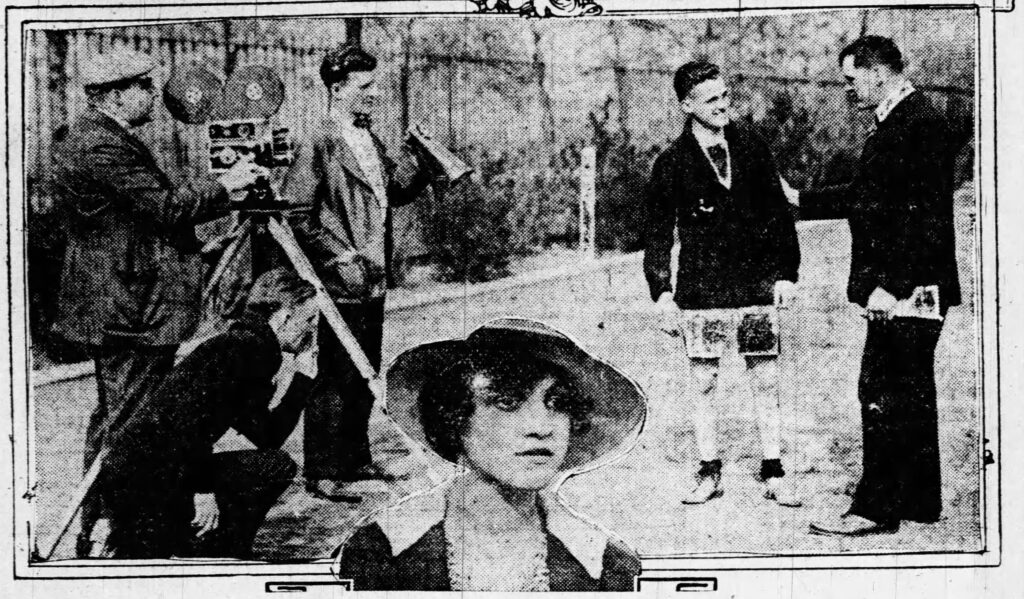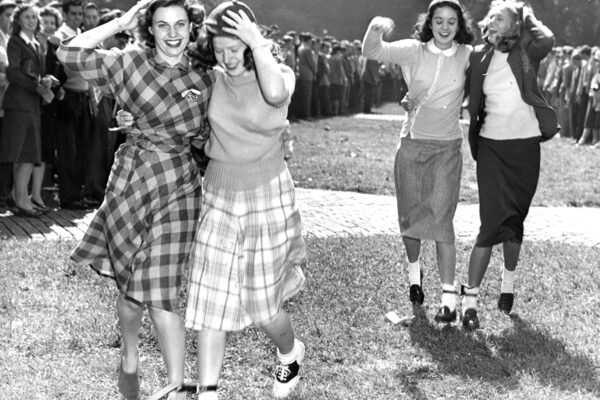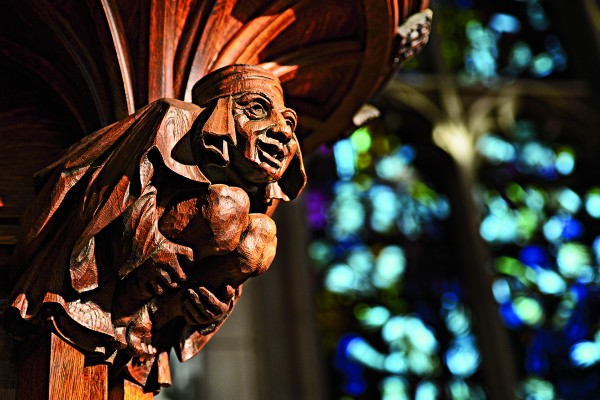It is 1916. In a little more than a year, the United States will enter the Great War that is already raging in Europe. But for now, World War I is just a small article in the pages of Student Life, squeezed in between cigarette ads and stories about seances at McMillan Hall: “War effects English universities.” Apparently, there weren’t enough students to keep Cambridge University open.
The big story in the paper is that Pralma, the senior men’s honorary society, is planning the “biggest, best and most circusy” Univee Surkuss ever. This precursor to Thurtene Carnival saw student groups host different booths, including a “gambling hell,” a pink-lemonade stand and the “stupendous” Harrison Freak Show, which “presents the odd creatures of the campus.” (These included the shortest man in the world, the German giant, and Mimi, the Hula-Hula dancing girl.)
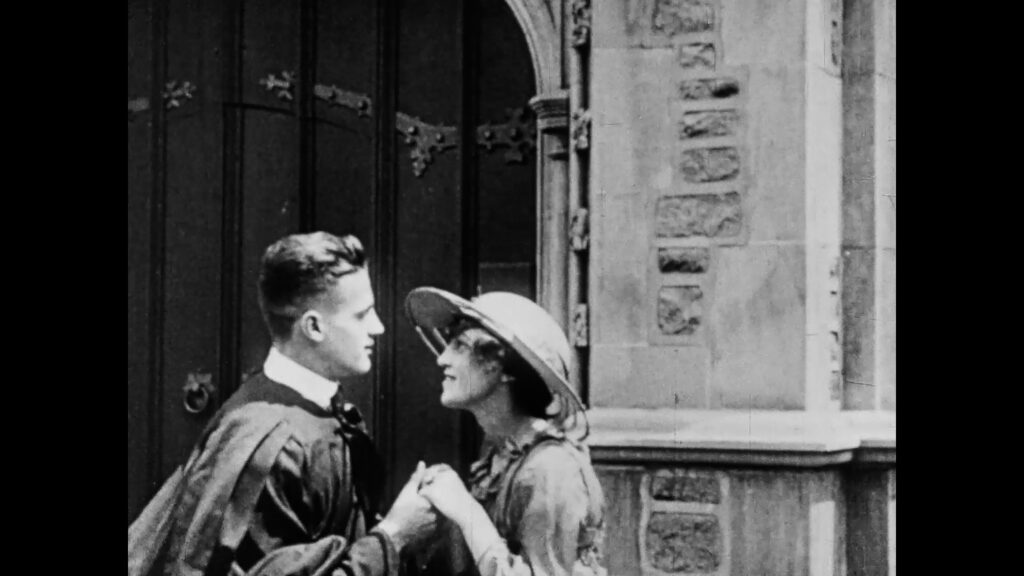
But the top draw for the event will be the student film The Maid of McMillan. The Thyrsus Dramatic Club, which has just finished staging W. Somerset Maugham’s Mrs. Dot, about a rich young widow in upper-crust English society who has fallen in love with an engaged man, wants to try their hand at filmmaking.
Thyrsus sent out a call for “scenarios” or screenplays to the student body but ultimately Donald Stewart, JD ’17, and George D. Bartlett, JD ’20, two members of Thyrsus, would end up writing the movie’s screenplay. And the whole club got to act in many of the scenes.
The Maid of McMillan tells the story of Jack Tower (played by Gordon Morrison, JD ’18), the captain of the track team, who is in love with Myrtle Maroon (played by Dean Marion McDaris, BA ’19), a pretty co-ed. (At the time, people often called the university colors “the maroon and myrtle” instead of red and green.) An important track meet is coming up, and while Jack is out training, he meets Aloisius Higgins (a “hick” according to the scenario played by Philip Bryan, JD ’18), who outruns Jack.
Despite the meet being the only way Jack can win his W (a letter for his letter jacket), he relinquishes his spot in the race and tells the coach to race Higgins, who goes on to win. The actual track coach, Bill Edmunds, is in the film, as is Chancellor Frederic Aldin Hall. Chancellor Hall is seen presenting Higgins with his trophy, but he also gives Jack his W for his sportsmanship. Both the presentation of the awards and the track meet are opportunities for large crowd scenes and around 300 students appear in the film.
Jack and Myrtle become engaged, but since he is a senior, and she is only a junior, he leaves and promises to return for her. When he does come back, she flees her dorm, McMillan Hall, via ladder with several suitcases. They go to Clayton to marry, but on the way are attacked by highwaymen. With some help from Myrtle, Jack is able to dispatch the thieves (one is played by screenplay writer Donald Stewart) and the two return to campus, married, to relate the adventure to all of their friends.
“Oh, it’s perfectly darling,” a freshman girl said upon leaving the theater. The “two-reel thriller” proved the most popular attraction at the carnival with six showings to capacity audiences in the gymnasium.
A strange circus
The Surkuss featured other attractions including a “Persian Burlesque” put on by architecture students that apparently “proved a disappointing attraction for the masculine visitors.” Engineering students offered mandolin solos, duets and quartets for money, and the McMillanites (students of the women’s dorm) “held forth and held up at the Palm Grotto where 10-cent ice cream was sold for 15c to the unwary men who paused nearby. The girls heroically ate plate after plate of ice cream at the invitation of their victims, until they were all but frozen,” according to reports from Student Life.
The Surkuss also served “a strange commodity … called ‘hot dogs.’ This food was certainly not hot; but as regards the latter quality, it must have been as stated if smell and looks are any criterion,” Student Life reported.
There was also a young woman who told fortunes by reading palms. “Every man learned that his palm foretold he was destined to marry a dark, slender girl who ‘made up well as a [fortune teller].’” The girl, Grace Woods, was dark, slender and dressed as a fortune teller.
Sadly, the second most popular attraction (after The Maid of McMillan) had a racial slur in its name and implied guests would be hitting Black babies. The booth was actually a dunk tank and people could pay to throw balls and knock in a member of Lock & Chain, a sophomore secret society. But the dunk tank was a less cruel version of the popular and virulently racist “African dodger” games, which encouraged participants to throw baseballs at a Black man’s head. (To learn more about the history of the sideshow game in general click here.)
In the end, the Surkuss that year raised more than $400, which went toward the swimming pool fund.
The Maid of McMillan achieved its own success. In order to afford the costs of making it, Thyrsus sold the movie to the university so it could use it for advertising purposes. But the film was also shown around town at local theaters.
Actors fall in love in real life
University Archivist Sonya Rooney and Andy Uhrich, curator of film and media at University Libraries, have been trying to piece together the 100-plus-year history of the film. News reports from the time don’t actually include quotes from anyone involved in the production. But their work turned up Claudia Peebles, the granddaughter of Donald Stewart and Dean Marion McDaris — that’s right, the screenplay writer and Myrtle Maroon fell in love.
According to Peebles, who spoke to Rooney about her family, Stewart left WashU to join the American Field Service in France. This was an elite group of students that served the French in World War I prior to the U.S.’s involvement. Stewart spoke fluent French and met Charles De Gaulle while he was abroad.
McDaris, on the other hand, got married and had a son, but was divorced by 1919. She and Stewart reconnected at a party and eloped, according to Peebles. McDaris was “a consummate flapper. She smoked, drank and used words unbecoming a lady,” Peebles recalls. This was in contrast to Stewart who was more conservative. Her behavior didn’t sit well in the small town of Independence, Kansas, where the couple settled down, and where Stewart held a high-powered executive job and political positions.
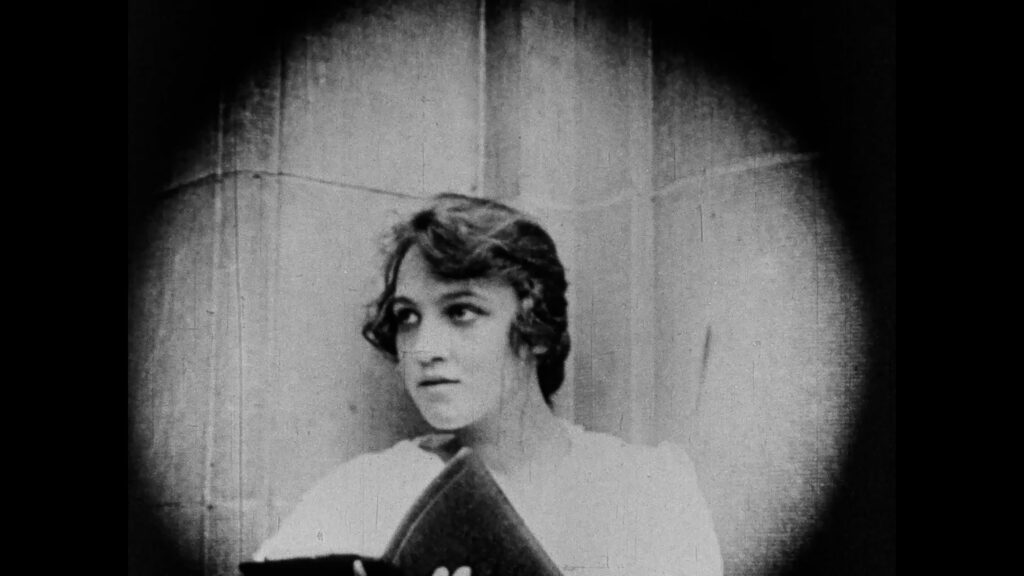
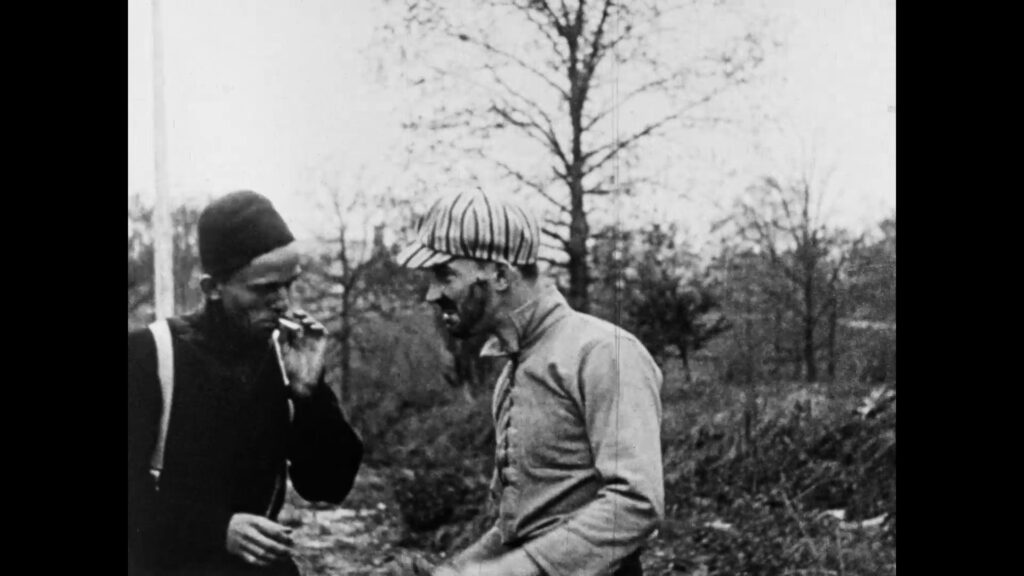
The pair had five children, including McDaris’ son from her first marriage, whom Stewart adopted.
Stewart and McDaris often tapped into their Thyrsus Drama Club roots. McDaris “had acting ambitions that never went beyond local theater and some incredible photos of her in ’20s and ’30s garb,” Peebles says. But the two did create incredible Christmas cards “in the form of a theater bill featuring their children and themselves as actors, director, etc. Or a graduation program with everyone as the drama teacher or coach or principal. They are a riot to read.”
Peebles also remembers visiting her grandparents in Hawaii, where the pair moved in their late 70s. “Life with them was never dull,” she says.
A film lost, and found
But what happened to the film itself?
In 1982, when Mitch Walker, BS ’83, first encountered the film The Maid of McMillan, it was in pieces. Walker and Beryl Manne, supervisor of university archives, had been working for weeks to find the film. Then Manne found a box and Walker studied the film strips inside.
“Once I saw a frame that said ‘Jack Tower… in love with Myrtle Maroon,’ I knew this had to be it,” Walker recalled in an email. “I could barely contain my excitement, but I kept looking until I saw a title frame saying quite clearly, The Maid of McMillan. We had finally found it!”
Now, the silent film is one of the earliest extant student films.
“In film history or media, you don’t really ever want to say something is the first,” says Andy Uhrich, curator of film and media at the University Libraries. “It doesn’t really matter what was the first. And there is always something earlier, usually, or someone did it before. In this case, it does seem like there might be earlier student films, but we couldn’t find any that exist.”
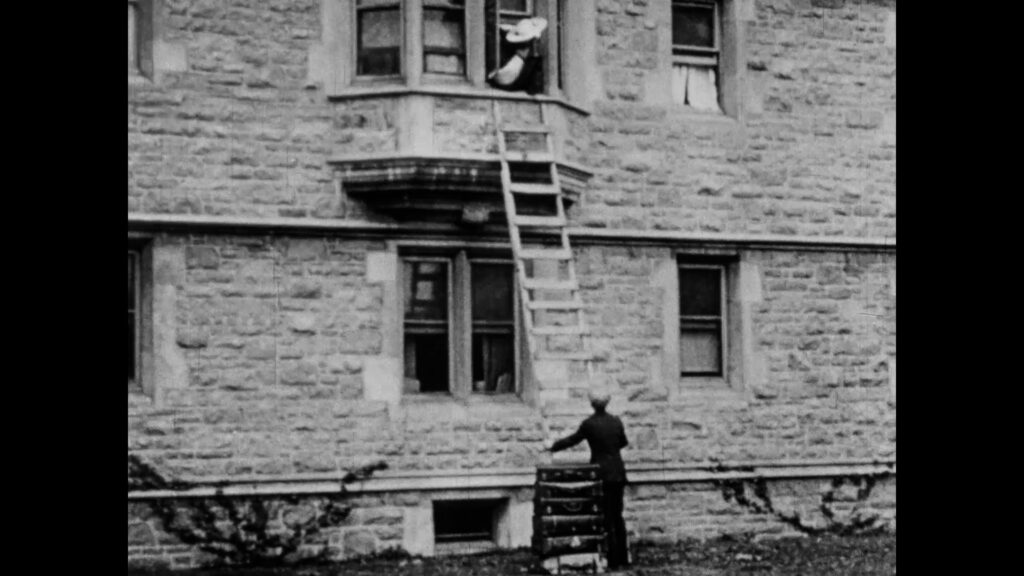
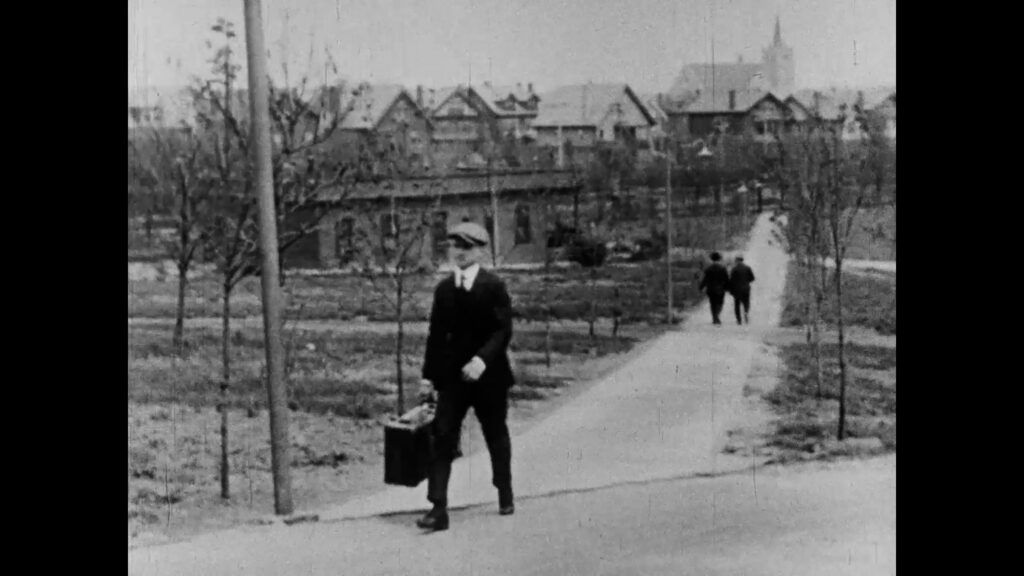
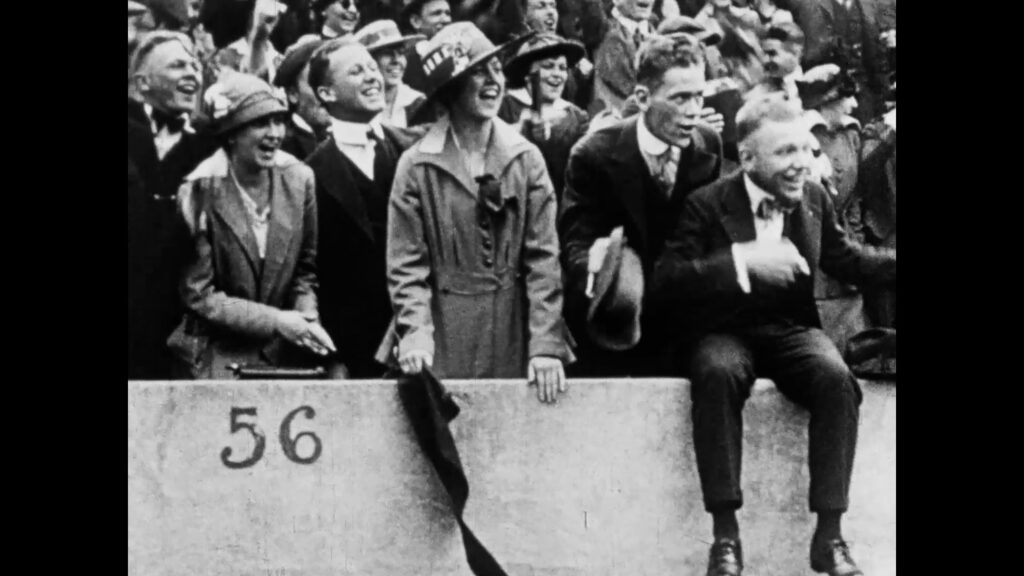
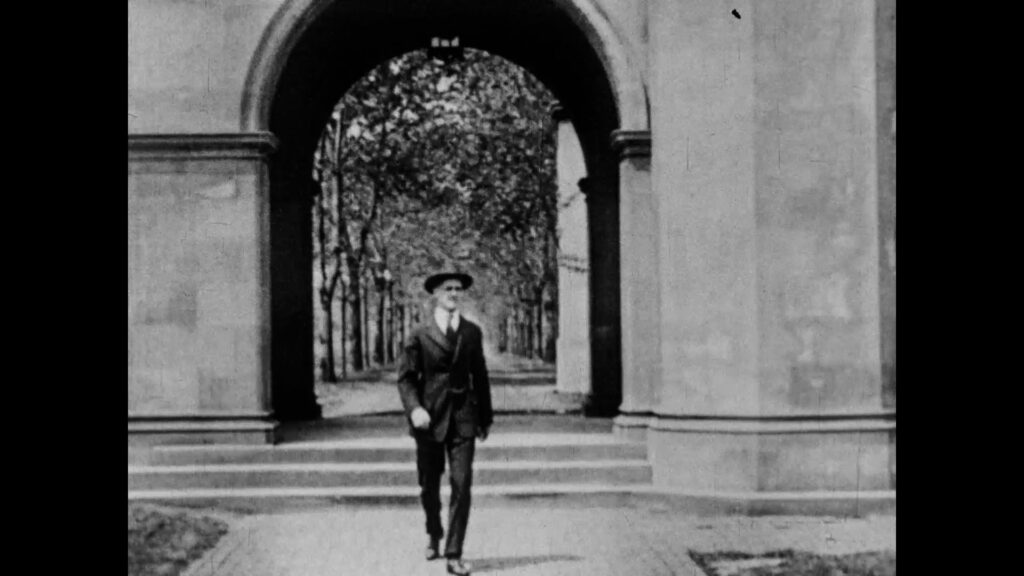
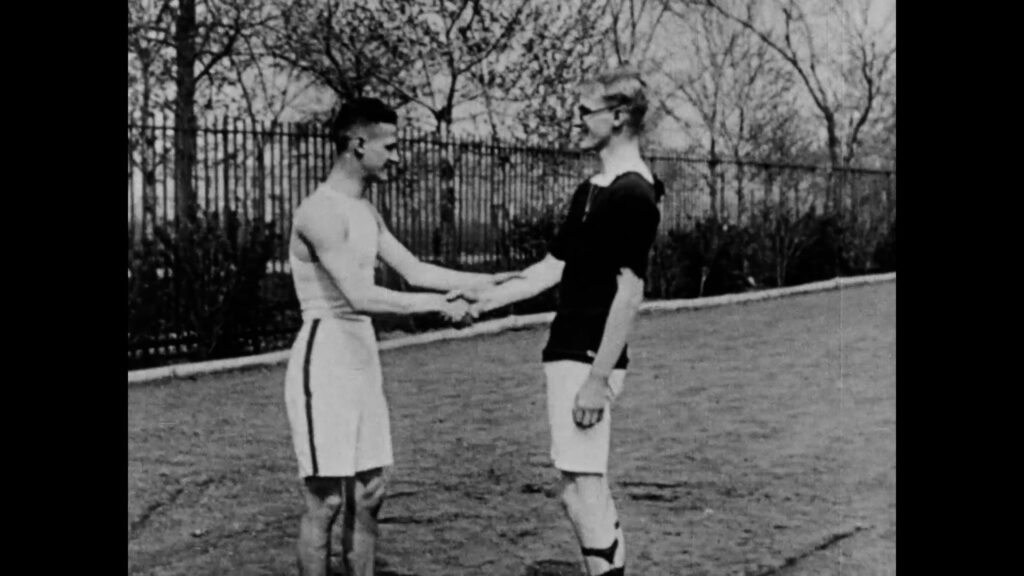
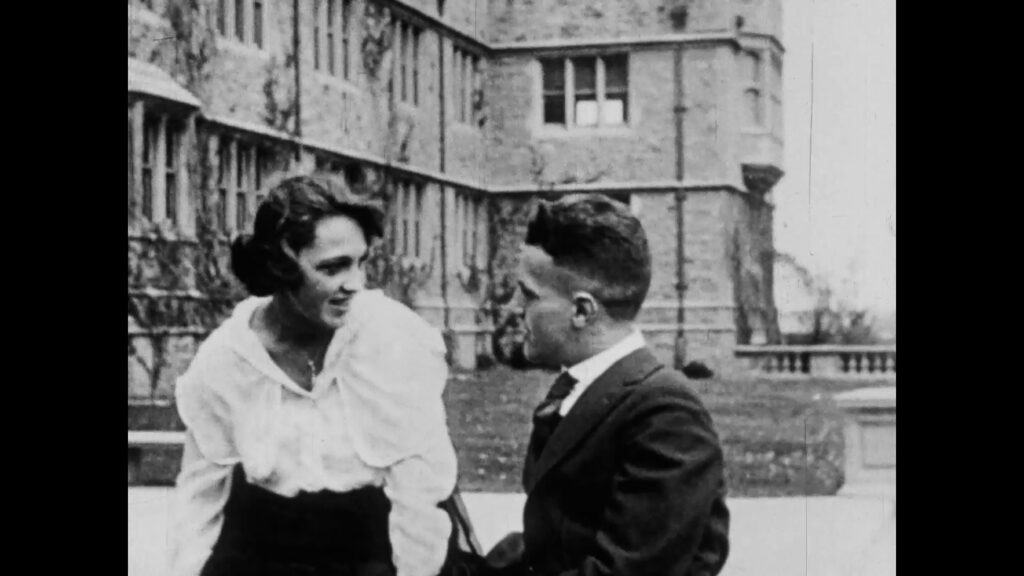
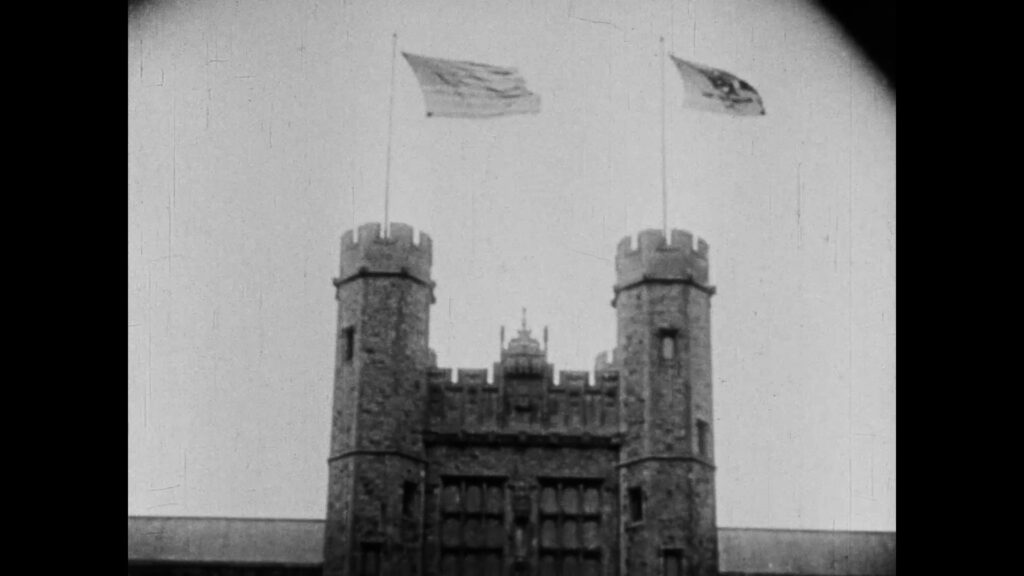
This was one of the reasons Uhrich and his team applied to the National Film Preservation Foundation for a grant to preserve The Maid of McMillan.
The only problem?
Walker is the last known person to ever hold the original 35mm film. Manne was murdered not long after in 1989, and what happened to the film is unclear. Manne did give Walker a VHS copy of the film, which he still has to this day, and he knew she did some work to preserve it.
But the university had other copies of the film, particularly since the 35mm film stock the movie was originally shot on was highly flammable. (Film stock in the past was made with nitrate.) Plus, the movie was screened for the Class of 1916’s 50th reunion in 1966. Uhrich thinks that’s when the university created a 16mm version of the film, which was ultimately the one that was preserved.
“It would have been difficult to show a 35mm [in 1966],” Uhrich says. “[The 35mm film] decays and deteriorates and it could catch fire.”
“The Maid of McMillan is special because it… is such an early silent short film produced by students. And it provided a glimpse of Washington University and St. Louis in 1916.”
University archivist sonya rooney
The National Film Preservation Foundation gave WashU Libraries’ Film & Media Archive $7,630 to preserve the film. The goal was to return the movie back to 35mm film and create a digital version that will look as it did in the original 35mm format. Due to the pandemic, transferring the movie to film has been delayed — since they’re dealing with an old technology, the world of film preservation deals with scarcity issues on several fronts — but the digital version has already been screened at the Museum of Modern Art in New York City.
“Every year [MoMA] has a film series about film preservation, To Save & Project, and my hope was that they’d show the 35mm print,” Uhrich says. “It was disappointing [not to have it], but MoMA still showed the digital version. They had a piano player accompany it.”
Uhrich is especially excited for people to see the movie because, “when I watched it, I was like, ‘wow this is actually pretty well made.’”
Archivist Sonya Rooney agrees, “The Maid of McMillan film is special because it … is such an early silent short film produced by students. And it provides a glimpse of Washington University and St. Louis in 1916. We are excited to have it preserved and digitized so we can share it with researchers.”
Researchers aren’t the only people who will be able to see the film. There is a planned screening this spring, and the digital version will be accessible online later this year. In the meantime, check out the trailer above and visit https://library.wustl.edu/spec/themaidofmcmillan/ to learn more about additional screenings.
